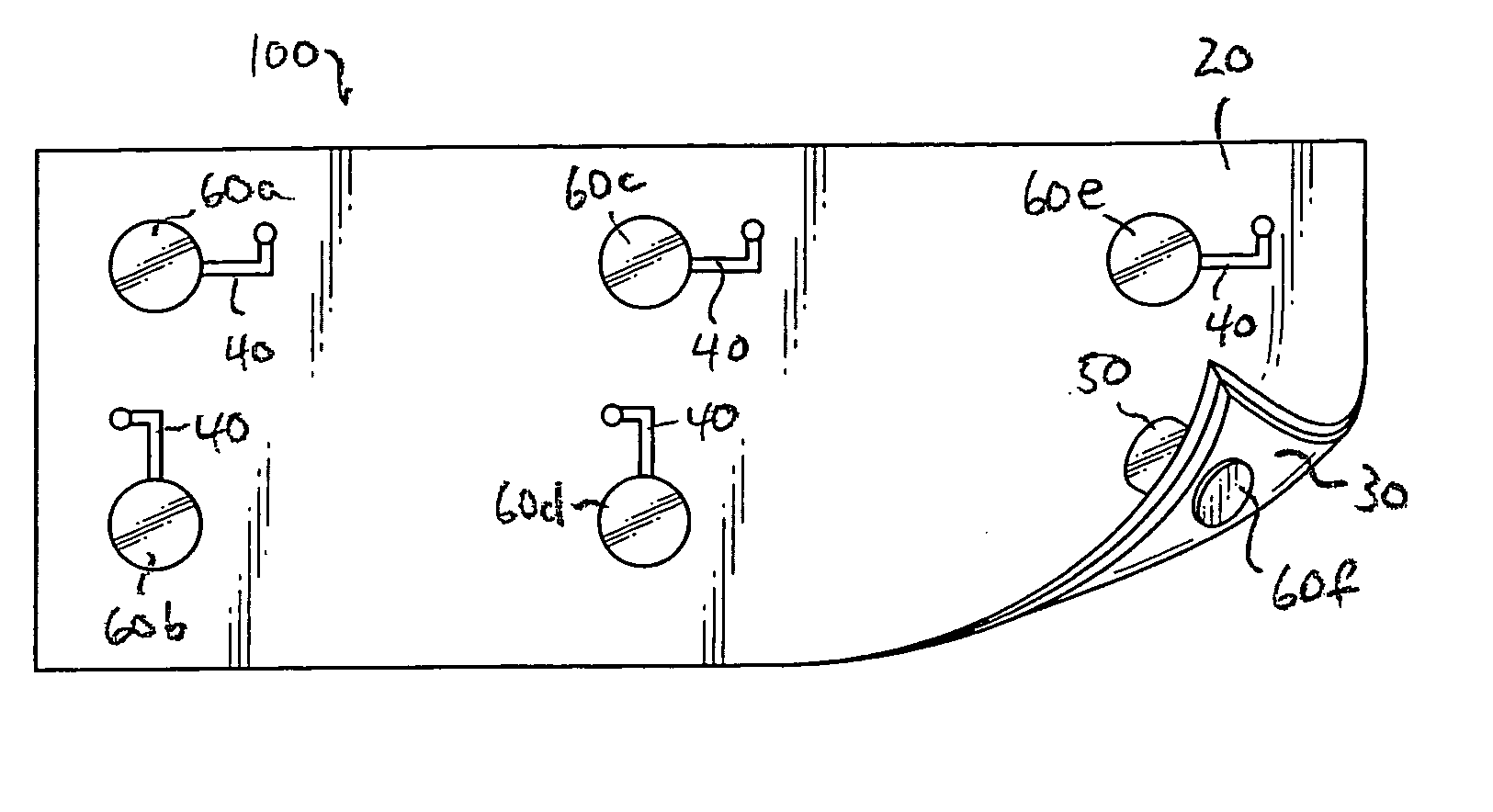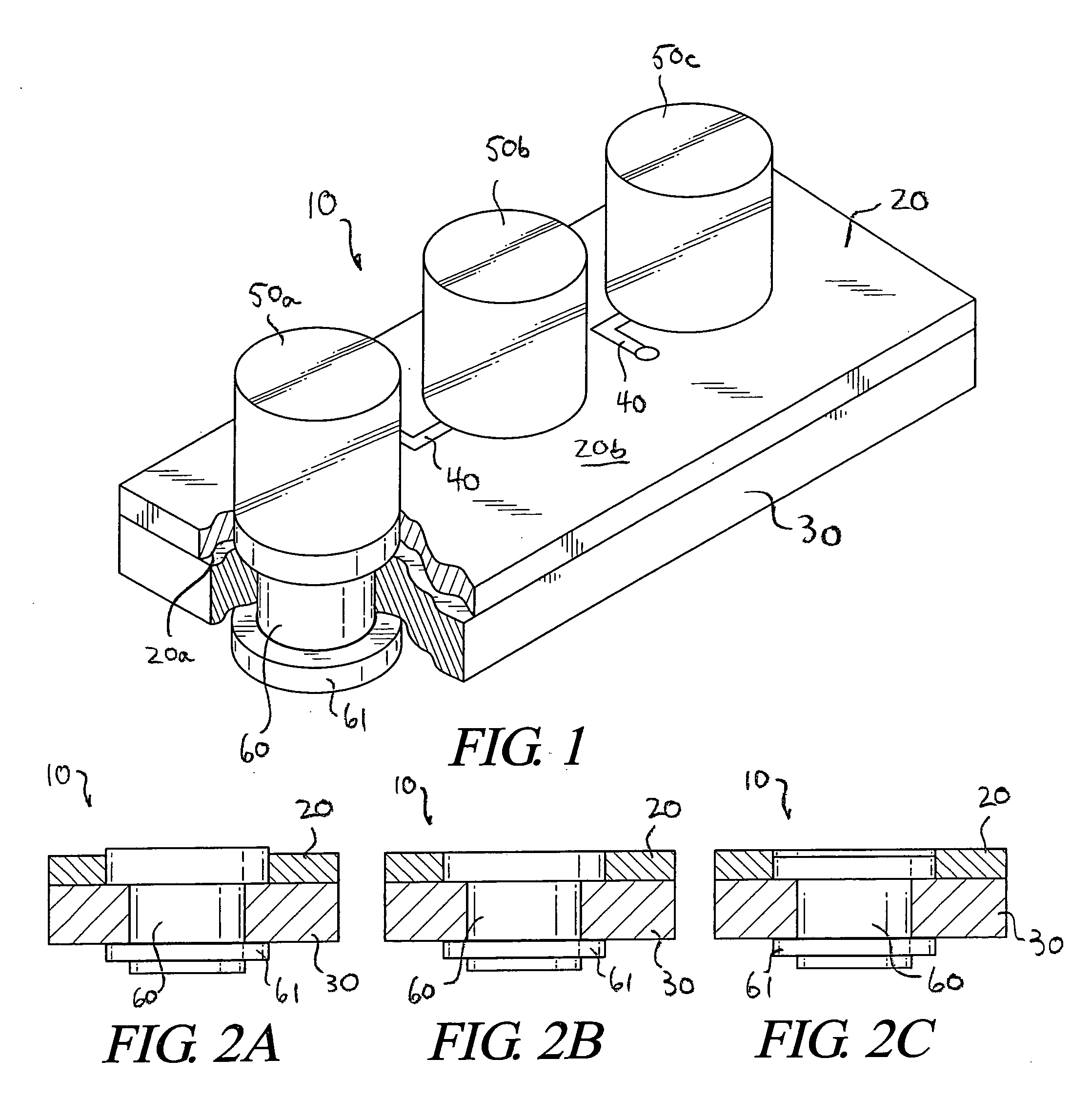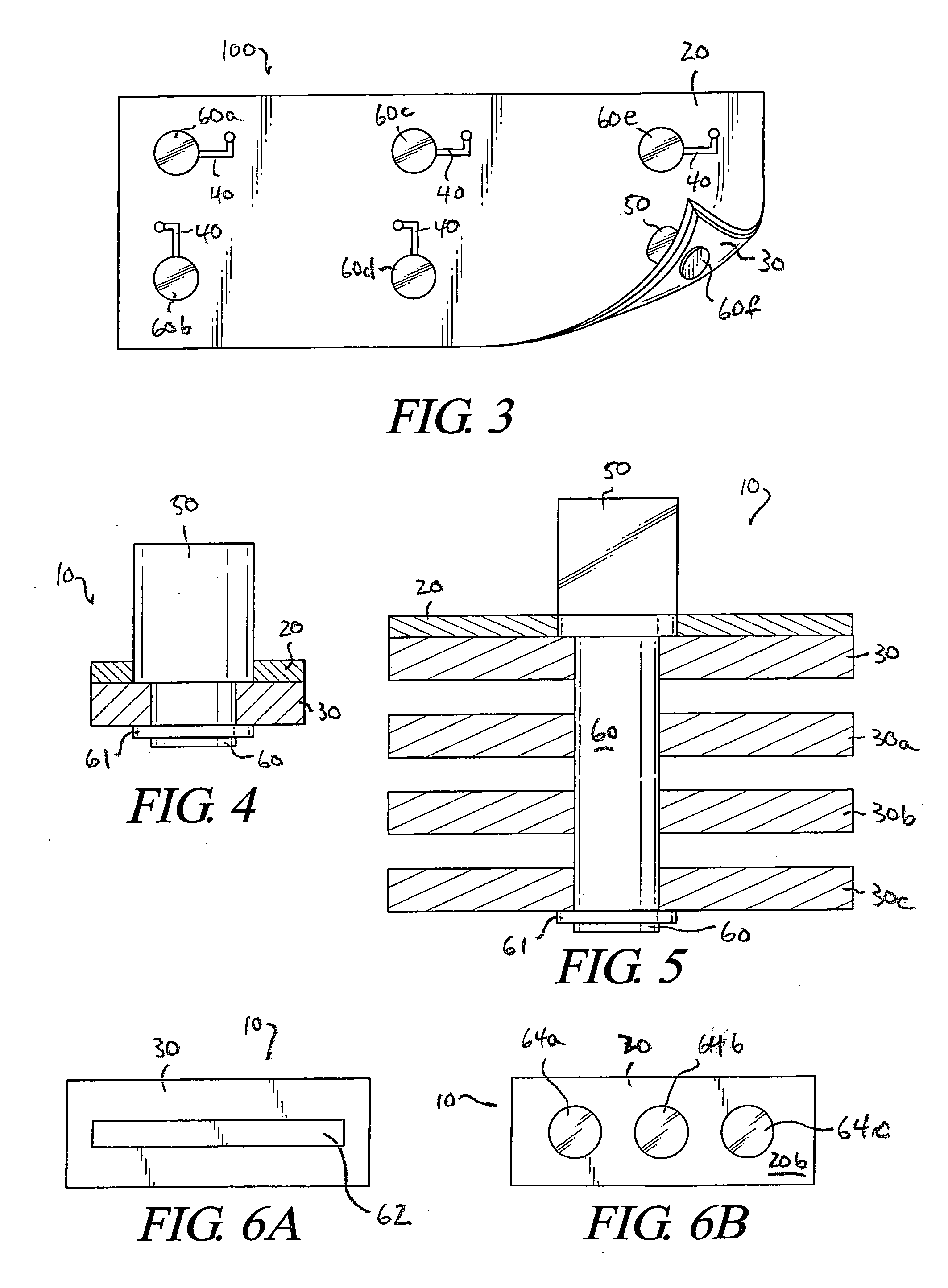Heat spreaders with vias
a heat spreader and via technology, applied in the direction of electrical apparatus construction details, light and heating apparatuses, printed circuit aspects, etc., can solve the problems of reducing the heat transfer rate of graphite materials with a high in-plane thermal conductivity, affecting the heat transfer rate of graphite materials, etc., to achieve the effect of improving heat transfer and low cos
- Summary
- Abstract
- Description
- Claims
- Application Information
AI Technical Summary
Benefits of technology
Problems solved by technology
Method used
Image
Examples
Embodiment Construction
[0077] The present invention provides preferred constructions for and methods of manufacturing graphite heat spreaders having thermal vias. In one embodiment flanged thermal vias are provided having at least one flange which engages with one of the major planar surfaces of the graphite planar element of the graphite heat spreader. Such a flanged via may be attached to the graphite heat spreader either through the use of a push on nut or the use of a second flange which is rigidly connected to the stem of the via. Thus such flanged vias include at least one flange, and either a second flange or a push on nut all of which extend above the surface of the graphite heat spreader element. In another embodiment, flush thermal vias are provided which in the final position are flush with the major planar surfaces of the graphite heat spreader element. Various preferred techniques for manufacturing both embodiments are provided.
[0078] Both embodiments preferably involve the method of manufac...
PUM
| Property | Measurement | Unit |
|---|---|---|
| density | aaaaa | aaaaa |
| temperatures | aaaaa | aaaaa |
| temperatures | aaaaa | aaaaa |
Abstract
Description
Claims
Application Information
 Login to View More
Login to View More - R&D
- Intellectual Property
- Life Sciences
- Materials
- Tech Scout
- Unparalleled Data Quality
- Higher Quality Content
- 60% Fewer Hallucinations
Browse by: Latest US Patents, China's latest patents, Technical Efficacy Thesaurus, Application Domain, Technology Topic, Popular Technical Reports.
© 2025 PatSnap. All rights reserved.Legal|Privacy policy|Modern Slavery Act Transparency Statement|Sitemap|About US| Contact US: help@patsnap.com



